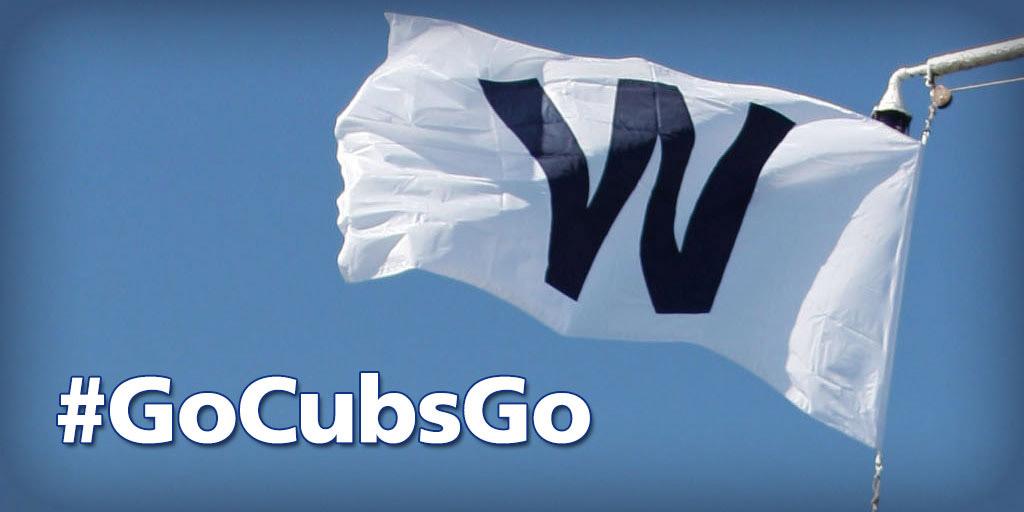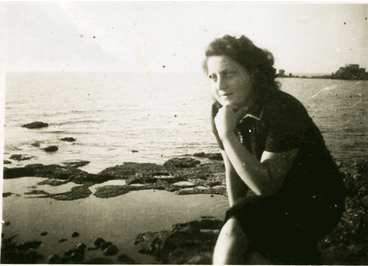 |
| Dr. Zachary Lasker |
I have gotten to know Zachary Lasker, director of Melton & Davidson Education Projects at
William Davidson Graduate School of Jewish Education of The Jewish Theological Seminary over the past few years. We met when he was presenting at the
Network for Research in Jewish Education (NRJE) conference about the
ReFrame program - which is teaching educators about experiential learning. He is a very smart guy and a dedicated Jewish educator.
The following piece was in my inbox this morning courtesy of - you guessed it -
eJewish Philanthropy. I thought it was worth sharing.
Please discuss on the eJP site so we can participate in one conversation!
-Ira
The Need for
Rest-and-Digest Philanthropy:
Strengthen Jewish Education
by Tending to Jewish Educators
By Zachary Lasker, Ed.D
Most of us can identify with the automatic response triggered when a child falls into potentially dangerous or stressful circumstances – he goes missing at the supermarket, she chases a ball into the middle of a busy street, he wakes up from a night terror. Without any conscious decision, we drop what we are doing and a jolt of energy and clarity propel us to ward off danger. When the challenge is surmounted, we settle back into a more calm and relaxed state as our system recharges for the next crisis. We can generally tolerate incidents of stress presented when caring for a few people at a time, but what happens to the body and mind when it takes responsibility for 20, 100, 500, or 1,000 people and the frequency of stress inducing events increases exponentially?
Recently I had the good fortune to brainstorm with a group of philanthropic leaders committed to the vibrant future of our Jewish day schools. The discussion centered on national initiatives that can guide and support leading educators. We were joined for a portion of our time by sets of school heads and board chairs to discuss their work, and the room began to buzz with excitement as school heads shared their innovating efforts in the areas of instruction, recruitment, fundraising, and governance. There was no shortage of ideas, and it was inspiring to see the group grow animated as they described their dreams. While school leaders ease-fully identified ideas crying out for incubation, they also shared their struggle to find the time and space required to leap forward from idea to implementation.
When the philanthropists reconvened there were two important revelations:
1. Schools vary in their needs based on the nuances of their specific community
2. School leaders have great potential as ground level innovators, reflective of a rising trend in entrepreneurial leadership wherein individuals are their own best problem solvers
Education leaders who identify a challenge and then design a solution are more likely to hit home runs, driven by an invigorating amount of empowerment and enthusiasm. This approach leaves plenty of room for networking, sharing of best practices, and collaboration, but honors the fact that the Jewish community – like the world over-– has outgrown a one size fits all, top-down way of working.
How can philanthropy move the needle of day school education on a national level in a way that empowers the local leader? Our group started to peel the onion:
- Could school heads identify the challenges they faced? Certainly.
- Did they have ideas for solutions and an interest in taking a lead as problem solvers? Absolutely.
- Did they have the time, space, and support to design, pilot, and assess these ideas? NO!
Jewish educators on the front line spend more time extinguishing fires than igniting them. When a program or school term is up and running we have a responsibility to ensure the physical, emotional, and social safety of our constituents, along with the administrative and financial security of our institutions. Children and parents are vocal with their needs, faculty/staff deserve attention, we are responsible to our lay leaders, and accidents happen despite the best-laid plans. Leading an institution forward under these circumstances is tough.
Fight-or-Flight Work
My tenure as a Jewish camp director was phenomenally fulfilling, but also taxing. Working in a vibrant Jewish community exposed me to spiritually moving experiences of prayer and song, awesome encounters with nature, ridiculously fun recreational activities, and an incredible group of people who became family. The work of a camp director – like my administrative colleagues in day and congregational schools, youth groups, and community centers – is also marked by days of great challenge. One single day could include the following curveballs:
- § Prank pulled by the oldest campers in the middle of the night sets a negative example and raises safety concerns
- Phone calls from parents concerned that photos posted on the website featuring their kids with a neutral facial expression is an early indicator of flu, homesickness, or bullying
- Call from the infirmary: a handful of campers tested positive for lice
- Head wilderness guide needs extended time off to be with an ill grandparent
- Surprise inspection by a health inspector
Each of these incidents triggers an automatic physiological response, similar to when a child is missing or chases a ball into the street. What to do? Take flight to some unidentified tropical setting OR take a deep breath and face each incident head on. Opting for “fight” over “flight,” my body shifted into autopilot mode marked by a rush of adrenaline as I did whatever was needed to overcome the obstacles. Physical and mental energy went to the issue at hand, over other needs such as rest, food, and hygiene. Most Jewish educators prefer to spend time observing programs, mentoring faculty/staff, teaching, and cataloging inspiring moments, but when a program is in session we have no choice but to face the curveballs when thrown. Many of my summers were spent in “reactive mode,” responding to the daily needs of the learners, staff, and parents under my care.
The Jewish Educator’s Nervous System
There is a scientific explanation for when a Jewish educator shifts into this “fight-or-flight” mode. Our autonomic nervous system regulates many of the primary functions of the body – heart rate, digestion, respiratory rate, and urination. When the body perceives a harmful, threatening, or otherwise stressful event there is a discharge of the sympathetic nervous system, which primes animals for the mode of “fight-or-flight.” A physiological reaction follows wherein the body produces a specific hormone that increases blood pressure and sugar, and suppresses the immune system.
- Heart and lung action accelerate
- Stomach/intestinal action slows or stops digestion
- Metabolic energy sources are released for muscular action
- Bladder actions relax
- Tunnel vision (loss of peripheral vision)
The body is now physically prepared to instinctively face the challenge head on. Physiological responses by the sympathetic nervous system when in flight-or-flight mode are accompanied by emotional, cognitive, and social responses. Individuals naturally prone to higher levels of emotional reactivity may experience an increase in anxiety or aggression. Cognition is generally more inclined to recognize the negative over the positive. We are more likely to perceive ambiguous situations as negative, and recall negative words. This inclination may extend into social situations, manifesting in behaviors that are aggressive or hostile.
The sympathetic nervous system is our best resource as a temporary, adaptive reaction to stress. Prolonged endurance of stress pushes the sympathetic nervous system into “overdrive,” and puts us at risk for a number of consequences ranging from headaches and problems sleeping, to lack of motivation and social withdrawal.
The body functions most effectively in fight-or-flight mode when given time off to generate and conserve energy. This occurs when the parasympathetic nervous system is activated and the body nestles into a state of “rest-and-digest.” Heart rate and force decrease, intestinal and glandular activity increase, and the body relaxes its sexual and urinary functions[1]. The body is more protected from the risks associated with the fight-or-flight state.
As a Jewish camp director the summer was rarely the time and space for my own creative and strategic thinking, for learning and growing, and for attending to my own needs. Rather, I needed to create space to fulfill these needs during the year. I was lucky. As a Ramah director, I was part of a network of camp leadership who offered each other professional and emotional support, and who met regularly during the off-season to exchange ideas and to set strategic goals for the Ramah movement. I was also fortunate to benefit from professional learning opportunities through the Foundation for Jewish Camp and American Camp Association, and through doctoral studies with the full support of my lay leadership.
Rest & Digest Philanthropy
Philanthropists committed to the vibrant future of the Jewish people have a responsibility to ensure that our education leadership can rest-and-digest in order to face the inevitably long stretches of fight-or-flight that accompany responsibility for the physical, spiritual, emotional, and social well being of their learners. Lay leaders encourage rest-and-digest when they ensure their professionals take personal time off to maintain a healthy work-life balance. Two other priorities will secure the space educators need to rest-and-digest:
1. Claim opportunities for personal Jewish experiences
Jewish education is an emotional endeavor, and professionals are at their best when they can draw on their own encounters with Judaism. Those that champion Jewish educators have a responsibility to ensure that they experience prayer, text, Israel, Shabbat and other holidays, and a wide array of Jewish cultural expressions. There are great benefits to enabling Jewish educators with explicit opportunities for Jewish living and learning:
- They are likely to maintain their own passion to promote Jewish living and learning for others
- These experiences trigger concrete ideas for their work with learners
- Educators serve as role models for their learners in the instances where the learner sees the educator immersed in their own Jewish journey
2. Secure time and space to pursue new ideas with colleagues and mentors
As stated earlier, most Jewish educators can identify areas in need of improvement, and many even have innovative solutions. Few can find the time and support needed at their workplaces to design, implement, and assess these ideas. The need for sacred spaces and relationships to enable this process is critical.
Fortunately, there is a range of rest-and-digest opportunities currently available for learning, networking, mentoring, and assessment provided by a collection of institutions and agencies committed to emerging and seasoned Jewish educators.
The Davidson School of the Jewish Theological Seminary offers an array of experiences for institution and instructional leaders in schools, early childhood centers, and community centers. Many camp networks, such as the
National Ramah Commission and the
Foundation for Jewish Camp, are at the forefront of these efforts by providing opportunities for summer and year round staff to pursue their own Jewish learning and training.
Mechon Hadar provides programs for Jewish educators to encounter Judaism through text and music in an egalitarian, beit midrash setting.
However, strategic action is required to grow, protect and leverage these opportunities. Our field needs more visionary philanthropists who will partner with national providers to ensure they remain accessible to local communities and professionals. On a local level, philanthropists and lay leaders can partner with their professionals to identify the interventions that will most behoove the professionals and carve out pockets of time for rest-and-digest within the constantly busy rhythm of the year. “If not now – when?”
[1]
http://www.medicinenet.com/script/main/art.asp?articlekey=4770
Dr. Zachary Lasker is director of Melton & Davidson Education Projects at William Davidson Graduate School of Jewish Education of The Jewish Theological Seminary. Previously he served as camp director for Camp Ramah in California, and a teacher in day and congregational schools.







